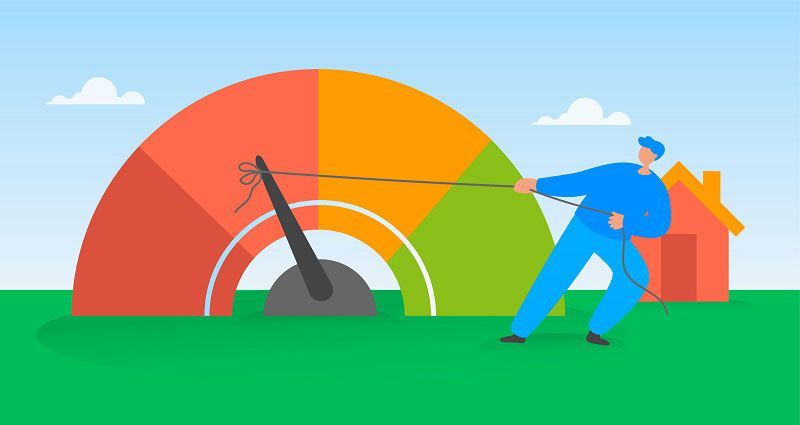We are an Equal Employment/Affirmative Action employer. We do not discriminate in hiring on the basis of sex, gender identity, sexual orientation, race, color, religious creed, national origin, physical or mental disability, protected Veteran status, or any other characteristic protected by federal, state, or local law.
Costs to Refinance in Texas and Why are there Refinance Fees?
Refinancing your home loan can be an excellent way to reduce your monthly payments, shorten your loan term, or tap into your home’s equity. However, many Texas homeowners are often taken aback by the closing costs associated with refinancing. Let’s explore the typical costs to refinance in Texas, explain why fees are necessary, and share strategies to manage or reduce these expenses effectively.
The cost of refinancing might seem high, especially if you’ve already paid closing costs when purchasing your home. However, these fees serve a purpose: they fund the various services needed to protect both you and your lender.
What Are the Costs to Refinance in Texas?
Refinancing costs in Texas are influenced by state regulations and other variables. The primary categories of refinancing fees include:
1. Lender Fees
Lenders incur significant expenses to process and approve loans. Lender fees help cover administrative costs, pay staff, and maintain operations. They include:
- Origination Fees: Charged for setting up your new loan.
- Processing and Underwriting Fees: These cover the work involved in verifying your financial documents and approving your loan.
- Discount Points: If you choose to "buy down" your interest rate, you’ll pay points upfront. For example, reducing your rate from 6% to 5.5% could involve a percentage of the loan amount as a fee.
💡 Pro Tip: Review the Loan Estimate your lender provides. This document will detail all lender-related charges under the Origination Charges section.
2. Third-Party Fees
Refinancing requires several independent services to validate and finalize the transaction. These third-party fees include:
- Appraisal Fee: Even if you’ve had a recent appraisal, most lenders require an updated valuation. Appraisals are essential for confirming your property’s current market value.
- Real estate markets fluctuate. An updated appraisal ensures that your home’s value supports the new loan amount. This protects both you and the lender from borrowing beyond the property’s worth.
- Credit Report Fee: A small fee is charged to pull your credit report for loan approval.
- Flood Certification Fee: Ensures your property complies with flood zone requirements.
- Attorney Fees: While not always applicable, certain legal documents or loan structures may require attorney involvement.
💬 Learn more about why lenders require appraisals in refinancing in our detailed article: how to refinancing your mortgage in Texas.

3. Title Insurance and Title Fees
Since your lender takes on financial risk by issuing a new loan, they require assurance that no other claims exist against the property.
In Texas, title insurance is regulated by the Texas Department of Insurance (TDI), ensuring that fees are standardized across the state. During a refinance, you will need a new lender’s title policy to protect the new lender from potential claims or liens.
- Why is Title Insurance Necessary? Over time, liens, unpaid taxes, utility liens, or other claims can arise on a property. A lender’s title policy guarantees the lender remains in first lien position, ensuring there are no competing claims.
- During a refinance, any liens attached to the property will most likely be paid off.
- Discounts for Refinancing:
- 50% Discount: If refinancing within four years of purchasing your home.
- 25% Discount: If refinancing occurs within four to eight years.
🔗 For more information on title insurance regulations, visit the Texas Department of Insurance.
4. Government Fees
Government recording fees are standard in all refinancing transactions. Refinance transactions must be legally documented with your county. Government recording fees ensure that all paperwork is filed and enforceable.These cover:
- Recording your new loan with the county.
- Certifying property tax status through tax certificates.
Some states also charge local taxes, but Texas homeowners benefit from relatively low added taxes during refinancing.
5. Homeowners Association (HOA) Fees
If your property is part of an HOA, you’ll encounter a transfer fee. This fee typically ranges from $100 to $300 and is charged for updating HOA records to reflect your new lender.
💡 Pro Tip: Contact your HOA in advance to confirm their specific fees and requirements during financing.
Beware of “No-Cost” Refinances
If a lender advertises a “no-cost refinance,” it’s essential to understand the fine print. Typically, these offers involve:
- Rolling Fees into Your Loan: While you won’t pay upfront, these costs are added to your principal balance, increasing your loan amount.
- Higher Interest Rates: Lenders may charge a slightly higher rate to offset the costs they’re absorbing.
Want to learn more? 🔗 Take a look at this in-depth resource to learn more about how closing-cost works.
Tips to Manage Refinancing Costs in Texas
Here are strategies to set yourself up for the right expectations:
- Compare Apples to Apples: If you are getting quotes from multiple lenders to compare rates, fees, and terms, make sure you are comparing all the fees.
- Negotiate Fees: Some lender fees, such as origination charges, may be negotiable.
- Leverage Discounts: Ask your lender about title insurance discounts if you’ve recently purchased your home.
- Request a Cost Breakdown: Review the Loan Estimate and ensure all charges are clear.
- Understand Your Loan Options: Work with your lender to balance upfront costs with long-term savings.
FAQs
1. What are the typical costs associated with refinancing in Texas?
Refinancing costs in Texas include lender fees (such as origination, underwriting, and admin charges), third-party fees (appraisals, credit reports, flood determination), and title-related expenses like the lender’s title policy.
Additionally, expect recording fees, tax certificates, and possibly HOA transfer fees. These costs can vary but are essential to cover necessary services like appraisals, legal filings, and title insurance to ensure a smooth refinance process.
2. Why do I need title insurance again when refinancing?
When refinancing in Texas, a lender’s title policy is required to protect the new lender. This policy verifies that there are no unpaid taxes, liens, or encumbrances on the property. It reassures the lender that they hold the first lien position. If you're refinancing within four years of purchasing the property, you may qualify for a discounted title policy rate, regulated by the Texas Department of Insurance
3. Can I refinance with no out-of-pocket costs?
Yes, some lenders offer "no-cost" refinancing options, but it’s important to understand how these work. Typically, the costs are either rolled into the loan amount or offset by a slightly higher interest rate. Always ask your lender for a detailed cost breakdown to understand the trade-offs and make an informed decision.
Refinancing your home in Texas comes with costs, but these fees are necessary to ensure a smooth, secure transaction. By understanding the various charges and shopping for the best lender, you can maximize the financial benefits of refinancing while minimizing expenses.
Ready to explore your refinancing options? Contact me today to learn more. For additional resources, check out:
With the right preparation, refinancing can be a financially rewarding decision that aligns with your long-term goals.









NMLS #514497
Full service residential lender with an experienced team offering expert service, reliable communications and on-time closings in the greater Houston area.
NMLS #278675


Every week we release educational videos related to hot topics in the mortgage industry on YouTube.
Subscribe to our channel to stay in-the-know!
All Rights Reserved | Jennifer Hernandez | Legacy Mutual Mortgage. NMLS #514497
Made with ❤️by ARBA
